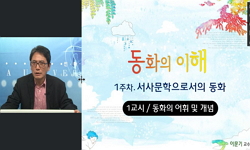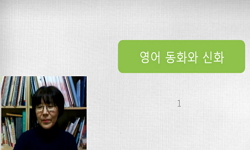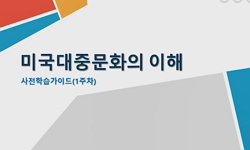North Korean defectors are increasing. From the initial ‘political defection’, to the ‘economic defection’, and ‘immigration defect’ is recent fashion. The North Korean fairy tales are stories about children who have escaped from North Kor...
http://chineseinput.net/에서 pinyin(병음)방식으로 중국어를 변환할 수 있습니다.
변환된 중국어를 복사하여 사용하시면 됩니다.
- 中文 을 입력하시려면 zhongwen을 입력하시고 space를누르시면됩니다.
- 北京 을 입력하시려면 beijing을 입력하시고 space를 누르시면 됩니다.

`탈북` 소재 동화 연구 = A Study on the Fairy Tales about North Korea - Focusing on Materials of North Korean Settlement
한글로보기https://www.riss.kr/link?id=A103318117
- 저자
- 발행기관
- 학술지명
- 권호사항
-
발행연도
2017
-
작성언어
Korean
-
주제어
탈북 ; 동화 ; 경계인 ; 소외 ; 문화 ; defection ; fairy tale ; borderline ; alienation ; culture clashes
-
등재정보
KCI등재
-
자료형태
학술저널
-
수록면
227-254(28쪽)
-
KCI 피인용횟수
2
- DOI식별코드
- 제공처
-
0
상세조회 -
0
다운로드
부가정보
다국어 초록 (Multilingual Abstract)
North Korean defectors are increasing. From the initial ‘political defection’, to the ‘economic defection’, and ‘immigration defect’ is recent fashion. The North Korean fairy tales are stories about children who have escaped from North Korea.
North Korean defectors who have escaped to North Korea settled in China, third countries, or Korea. The settled North Korean child can not adapt to the society, and becomes a ‘marginal man’. They have not forgotten the culture of the past and have not yet accepted the culture of the present society. At the boundary where they stand, the culture of North Korea and the culture of Korean society collide. The suffering of a North Korean defector children as a marginal man is relatively more severe than that of an adult.
North Korean defector children suffer from inferiority. They suffer from the trauma of past suffering. Language is the biggest factor that makes a North Korean child experience a culture clashes. Subtle differences between Korean and North Korean languages cause unnecessary conflicts.
North Korean defector children feel cultural alienation. The reason why the cultural alienation of the defector children should be resolved is clear. A healthy society does not allow internal cultural clashes to separate society itself. Conflicts should be for integration. The defector fairy tales suggest the ways for North Korean defectors to overcome alienation and conflict.
Defector children in fairy tales escape from alienation through the disappearance of inferiority. The disappearance of inferiority is possible by establishing a relationship with another children. By recognizing and communicating with each other, homogeneity can be obtained. If they sympathize with each other, the inferiority of the North Korean defectors disappears.
Various cultures coexist in a multicultural society. Cultural clashes occur everywhere. When various problems arising from cultural clashes are overcomed through empathy and communication, society can achieve internal integration. It stands out from the conflict and becomes healthier. This method of resolving conflicts proposed by defector children tales can be equally applied to multicultural families.
The North Korean fairy tale began as a literary accusation that notifies the misery of the North Korea. But by presenting the method of internal integration, it secured the status of literature of communication and sympathy. After that, North Korean fairy tales will be changed to show how diversity acquired in the process of overcoming the cultural conflict serves as a potential to develop society. This direction is consistent with the direction of our society growth that has already become a multicultural society.
목차 (Table of Contents)
- 1. 서론-‘탈북’ 소재 동화의 확산
- 2. 경계인으로서의 탈북 아동
- 3. 문화 충돌과 소외의 양상
- 4. 갈등의 극복-소통과 공감, 동질성 확보
- 5. 결론-다양성 획득과 잠재력
- 1. 서론-‘탈북’ 소재 동화의 확산
- 2. 경계인으로서의 탈북 아동
- 3. 문화 충돌과 소외의 양상
- 4. 갈등의 극복-소통과 공감, 동질성 확보
- 5. 결론-다양성 획득과 잠재력
- 참고문헌
- Abstract
참고문헌 (Reference)
1 김이플, "헬로! 두떡마켓" 도서출판 씨즐북스 2016
2 정길연, "할아버지에게 아빠가 생겼어요" 도서출판물망초 2014
3 원유순, "피양랭면집 명옥이" 웅진주니어 2005
4 고정욱, "편견" 뜨인돌 어린이 2007
5 대한특수교육학회, "특수교육용어사전" 대구대학교 출판사 1986
6 박덕규, "탈북문학의 형성과 전개 양상" 한국문예창작학회 14 (14): 89-113, 2015
7 박덕규, "탈북디아스포라" 푸른사상 2012
8 최금락, "크로싱" 환타웍스 2008
9 선안나, "천의 얼굴을 가진 아동문학" 청동거울 2007
10 김형진, "이상한 놀이공원" 파란정원 2013
1 김이플, "헬로! 두떡마켓" 도서출판 씨즐북스 2016
2 정길연, "할아버지에게 아빠가 생겼어요" 도서출판물망초 2014
3 원유순, "피양랭면집 명옥이" 웅진주니어 2005
4 고정욱, "편견" 뜨인돌 어린이 2007
5 대한특수교육학회, "특수교육용어사전" 대구대학교 출판사 1986
6 박덕규, "탈북문학의 형성과 전개 양상" 한국문예창작학회 14 (14): 89-113, 2015
7 박덕규, "탈북디아스포라" 푸른사상 2012
8 최금락, "크로싱" 환타웍스 2008
9 선안나, "천의 얼굴을 가진 아동문학" 청동거울 2007
10 김형진, "이상한 놀이공원" 파란정원 2013
11 곽영미, "옥수수 할아버지" 다섯수레 2013
12 박경희, "엄마는 감자꽃 향기" 강같은평화 2012
13 나병철, "소설의 이해" 문예출판사 1993
14 정길연, "설마 군과 진짜 양의 거짓말 같은 참말" 도서출판물망초 2014
15 한경아, "새터민 이야기" 거인 2013
16 김바다, "비닐똥" 삼성당 2002
17 임신행, "붉은 꼬마 원숭이 으싸" 세계문예 2003
18 크리스 하먼, "민족문제의 재등장" 책갈피 2001
19 원유순, "떠돌이 별" 파란자전거 2015
20 문선이, "딱친구 강만기" 푸른숲주니어 2003
21 정목일, "두만강을 건너간 꽃제비들" 아동문예 2000
22 김근식, "대북포용정책의 진화를 위하여" 한울 2011
23 "뉴시스"
24 이은서, "넌 네가 얼마나 행복한 아이인지 아니" 국민출판 2011
25 신진, "낙타가시꽃의 탈출" 도서출판물망초 2015
26 조경숙, "나는야, 늙은 5학년" 비룡소 2009
27 이지현, "꽃제비와 똥돼지" 영림카디널 2007
28 김바다, "꽃제비" 대교북스주니어 2003
29 박현숙, "국경을 넘는 아이들" 살림어린이 2013
30 김미애, "계몽문집 황금펜 2013" 계몽아동문학회 2013
31 김하늬, "계몽문집 황금펜 2004" 계몽아동문학회 2004
32 윤보영, "경계인 이론을 통한 남한 정착 북한이탈주민 이해에 관한 연구" 사회과학연구원 22 (22): 187-216, 2015
33 문영숙, "개성빵" 아이앤북 2003
34 박경희, "감자 오그랑죽" 도서출판 물망초 2015
동일학술지(권/호) 다른 논문
-
- 한국아동청소년문학학회
- 이지호(Yi Jiho)
- 2017
- KCI등재
-
- 한국아동청소년문학학회
- 오세란(Oh Seran)
- 2017
- KCI등재
-
- 한국아동청소년문학학회
- 김제곤(Kim Jegon)
- 2017
- KCI등재
-
- 한국아동청소년문학학회
- 기도연(Ki Doyoun)
- 2017
- KCI등재
분석정보
인용정보 인용지수 설명보기
학술지 이력
| 연월일 | 이력구분 | 이력상세 | 등재구분 |
|---|---|---|---|
| 2026 | 평가예정 | 재인증평가 신청대상 (재인증) | |
| 2020-01-01 | 평가 | 등재학술지 유지 (재인증) |  |
| 2017-01-01 | 평가 | 등재학술지 유지 (계속평가) |  |
| 2013-01-01 | 평가 | 등재학술지 선정 (등재후보2차) |  |
| 2012-01-01 | 평가 | 등재후보 1차 PASS (등재후보1차) |  |
| 2010-01-01 | 평가 | 등재후보학술지 선정 (신규평가) |  |
학술지 인용정보
| 기준연도 | WOS-KCI 통합IF(2년) | KCIF(2년) | KCIF(3년) |
|---|---|---|---|
| 2016 | 0.6 | 0.6 | 0.59 |
| KCIF(4년) | KCIF(5년) | 중심성지수(3년) | 즉시성지수 |
| 0.58 | 0.57 | 1.001 | 0 |





 KCI
KCI DBpia
DBpia






